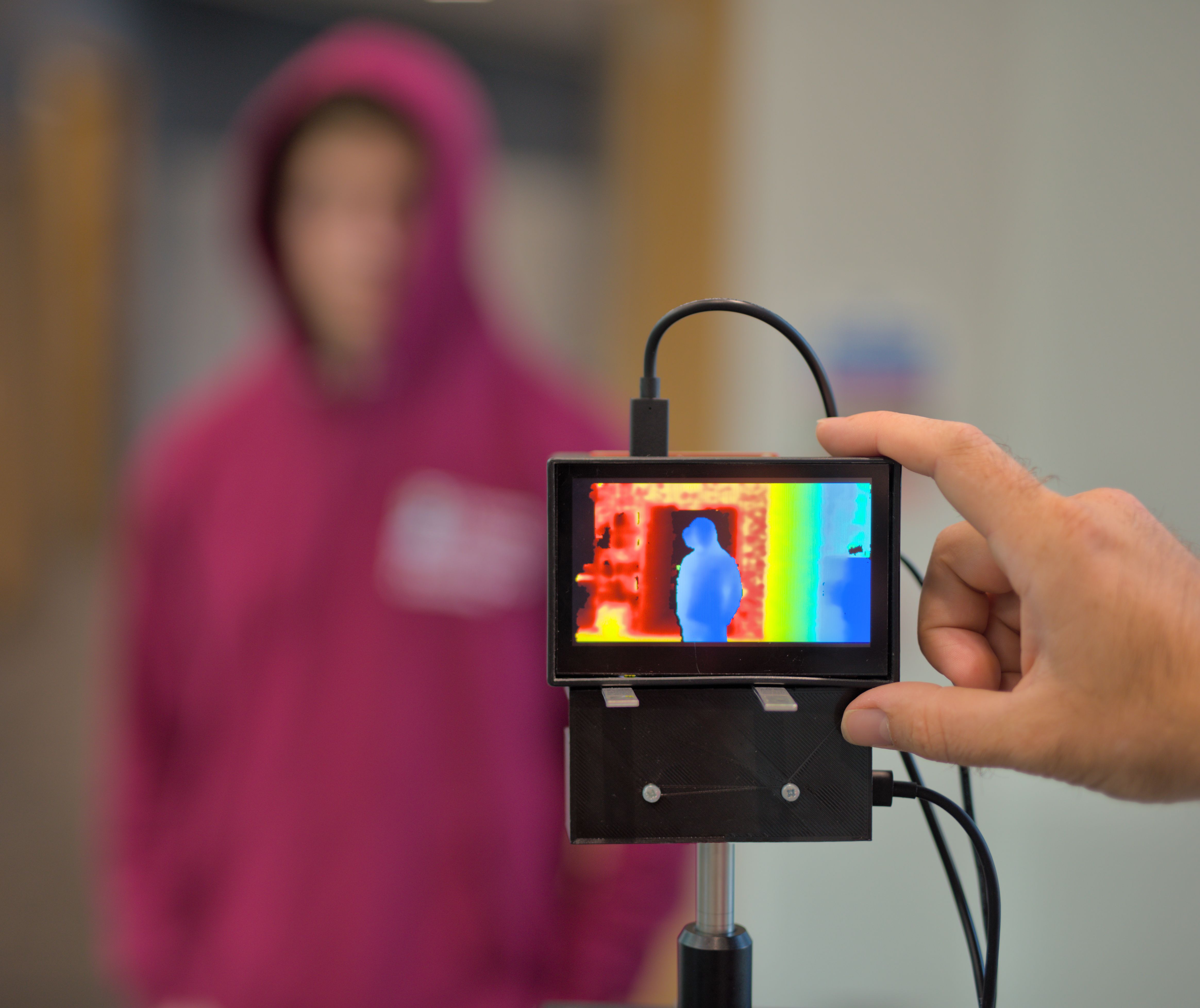AI-Assisted Imaging of Concealed Weapons
Real-time, at range detection of concealed weapons for police and border security
The ability to detect concealed knives and firearms is of vital importance in many areas of policing and security, including airports, stadiums, nightclubs and schools. This pressing issue disproportionately threatens young and disadvantaged communities, while putting security personnel under increasing threat. While technologies do exist to identify concealed weapons and illegal items, these typically involve expensive infrastructure that operates at a single access point that limits coverage and disrupts day-to-day business.
QuantIC researchers at the University of Glasgow have developed an AI-assisted approach to combine information from numerous sensors that collective produce a real-time, at range detection system. Scanning specifically for dangerous items, the device can ignore other metal-based devices such as mobile phones and watches while giving an accurate location of where the concealed weapon is.
The approach is low-cost and lightweight meaning it can be integrated onto police bodycams or doorways. High-speed scanning will remove queues and offer non-invasive security that informs greater stop and search approaches.

Benefits
- Security without queues and disruptive infrastructure
- Respects privacy - only identifies dangerous items with no ‘through clothing images’
- Low cost
- Highly portable and small device that can be retrofitted easily
- Capable of scanning multiple individuals in a scene simultaneously
Applications
- Airport security
- Police stop & search
- Defence and security
- Event and hospitality management
- Safety in public spaces and services e.g. hospitals and schools

Defence & Security
Meet our investigator
Professor Daniele Faccio is a Royal Academy Chair in Emerging Technologies, Fellow of the Royal Society of Edinburgh and Cavaliere dell'Ordine della Stella d'Italia (Knight of the Order of the Star of Italy). He joined the University of Glasgow in 2017 as Professor in Quantum Technologies where he leads the Extreme-Light group.

